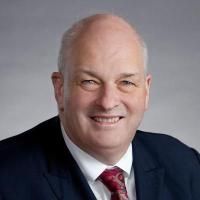Predictive Analytics for Determining Extended Operative Time in Corrective Adult Spinal Deformity Surgery.
Date
2022-04
Journal Title
Journal ISSN
Volume Title
Repository Usage Stats
views
downloads
Citation Stats
Abstract
Background
More sophisticated surgical techniques for correcting adult spinal deformity (ASD) have increased operative times, adding to physiologic stress on patients and increased complication incidence. This study aims to determine factors associated with operative time using a statistical learning algorithm.Methods
Retrospective review of a prospective multicenter database containing 837 patients undergoing long spinal fusions for ASD. Conditional inference decision trees identified factors associated with skin-to-skin operative time and cutoff points at which factors have a global effect. A conditional variable-importance table was constructed based on a nonreplacement sampling set of 2000 conditional inference trees. Means comparison for the top 15 variables at their respective significant cutoffs indicated effect sizes.Results
Included: 544 surgical ASD patients (mean age: 58.0 years; fusion length 11.3 levels; operative time: 378 minutes). The strongest predictor for operative time was institution/surgeon. Center/surgeons, grouped by decision tree hierarchy, a and b were, on average, 2 hours faster than center/surgeons c-f, who were 43 minutes faster than centers g-j, all P < 0.001. The next most important predictors were, in order, approach (combined vs posterior increases time by 139 minutes, P < 0.001), levels fused (<4 vs 5-9 increased time by 68 minutes, P < 0.050; 5-9 vs < 10 increased time by 47 minutes, P < 0.001), age (age <50 years increases time by 57 minutes, P < 0.001), and patient frailty (score <1.54 increases time by 65 minutes, P < 0.001). Surgical techniques, such as three-column osteotomies (35 minutes), interbody device (45 minutes), and decompression (48 minutes), also increased operative time. Both minor and major complications correlated with <66 minutes of increased operative time. Increased operative time also correlated with increased hospital length of stay (LOS), increased estimated intraoperative blood loss (EBL), and inferior 2-year Oswestry Disability Index (ODI) scores.Conclusions
Procedure location and specific surgeon are the most important factors determining operative time, accounting for operative time increases <2 hours. Surgical approach and number of levels fused were also associated with longer operative times, respectively. Extended operative time correlated with longer LOS, higher EBL, and inferior 2-y ODI outcomes.Clinical relevance
We further identified the poor outcomes associated with extended operative time during surgical correction of ASD, and attributed the useful predictors of time spent in the operating room, including site, surgeon, surgical approach, and the number of levels fused.Level of evidence: 3
Type
Department
Description
Provenance
Subjects
Citation
Permalink
Published Version (Please cite this version)
Publication Info
Passias, Peter G, Gregory W Poorman, Dennis Vasquez-Montes, Nicholas Kummer, Gregory Mundis, Neel Anand, Samantha R Horn, Frank A Segreto, et al. (2022). Predictive Analytics for Determining Extended Operative Time in Corrective Adult Spinal Deformity Surgery. International journal of spine surgery, 16(2). pp. 291–299. 10.14444/8174 Retrieved from https://hdl.handle.net/10161/28026.
This is constructed from limited available data and may be imprecise. To cite this article, please review & use the official citation provided by the journal.
Collections
Scholars@Duke

Peter Passias
Throughout my medical career, I have remained dedicated to improving my patients' quality of life. As a specialist in adult cervical and spinal deformity surgery, I understand the significant impact our interventions have on individuals suffering from debilitating pain and physical and mental health challenges. Spinal deformity surgery merges the complexities of spinal biomechanics with the needs of an aging population. My research focuses on spinal alignment, biomechanics, innovative surgical techniques, and health economics to ensure value-based care that enhances patient outcomes.

Christopher Ignatius Shaffrey
I have more than 25 years of experience treating patients of all ages with spinal disorders. I have had an interest in the management of spinal disorders since starting my medical education. I performed residencies in both orthopaedic surgery and neurosurgery to gain a comprehensive understanding of the entire range of spinal disorders. My goal has been to find innovative ways to manage the range of spinal conditions, straightforward to complex. I have a focus on managing patients with complex spinal disorders. My patient evaluation and management philosophy is to provide engaged, compassionate care that focuses on providing the simplest and least aggressive treatment option for a particular condition. In many cases, non-operative treatment options exist to improve a patient’s symptoms. I have been actively engaged in clinical research to find the best ways to manage spinal disorders in order to achieve better results with fewer complications.
Unless otherwise indicated, scholarly articles published by Duke faculty members are made available here with a CC-BY-NC (Creative Commons Attribution Non-Commercial) license, as enabled by the Duke Open Access Policy. If you wish to use the materials in ways not already permitted under CC-BY-NC, please consult the copyright owner. Other materials are made available here through the author’s grant of a non-exclusive license to make their work openly accessible.
